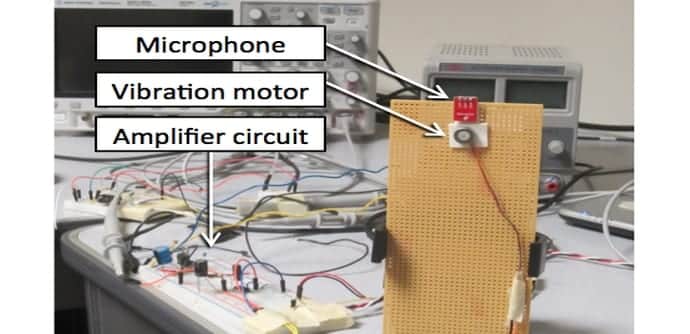VibraPhone attack can turn smartphone vibration motor into microphone to spy on the user
Two researchers at the University of Illinois at Urbana-Champaign’s department of Electrical and Computer Engineering have recently devised a method to turn a smartphone’s vibration motor into a microphone, capable of recording the sound around them.
The brains behind the “VibraPhone” research are Associate professor Romit Roy Choudhury and Ph.D. candidate Nirupam Roy. They are planning to present their paper at MobiSys in Singapore later this month.
Even though a speaker, a microphone, and a vibration motor have completely different functions, actually, these components depend on very similar basic principles.
The VibraPhone is based on the idea that any vibration motor is technically a speaker. By moving a coil, vibration motors transform electrical current sent into sound waves. The coil in this case produces vibrations and low buzzing sounds in the phone.
Since a microphone is essentially a reversed speaker, taking incoming sounds and transforms them back into electrical waves, the researchers decided to try an experiment during which they turned a phone’s vibration motor into a microphone.
The researchers say they had to rewire the phone’s vibration motor, which makes this highly improbable to be an attack that can be used in the real world unless the attacker has enough time to break the phone apart and rewire its vibration motor.
The researchers said while they were able to record sounds, the sound’s quality was however very poor in the experiment attempted by them.
The reason was that the vibration motor was not improved for recording audio and was able to record sound waves of maximum frequencies of up to 2 kHz, the lower end of the spectrum, leaving out high-pitch noises.
In order to enhance its output, the researchers applied various algorithms to the recorded sound wave and effort to fill in the missing audio waves matching the high-frequency sound.
While four in five persons were able to understand spoken words, the results were not the best. The researchers did not try to refine this algorithm and said that someone that has an interest in enhancing sound pick-up via vibration motors would be able to get superior results with more effort.
“Even automatic speech recognizers were able to decode the majority of the detected words and phrases, especially at higher loudness,” the researchers said. “The application space of such systems remains open, and could range from malware eavesdropping into human phone conversation, to voice-controlled wearables, to better microphones that use the vibra-motor as a second MIMO-antenna.”
Below is a video explaining the attack. More details and examples are available via the VibraPhone website, and in the Listening through a Vibration Motor research paper by Nirupam Roy and Romit Roy Choudhury.
